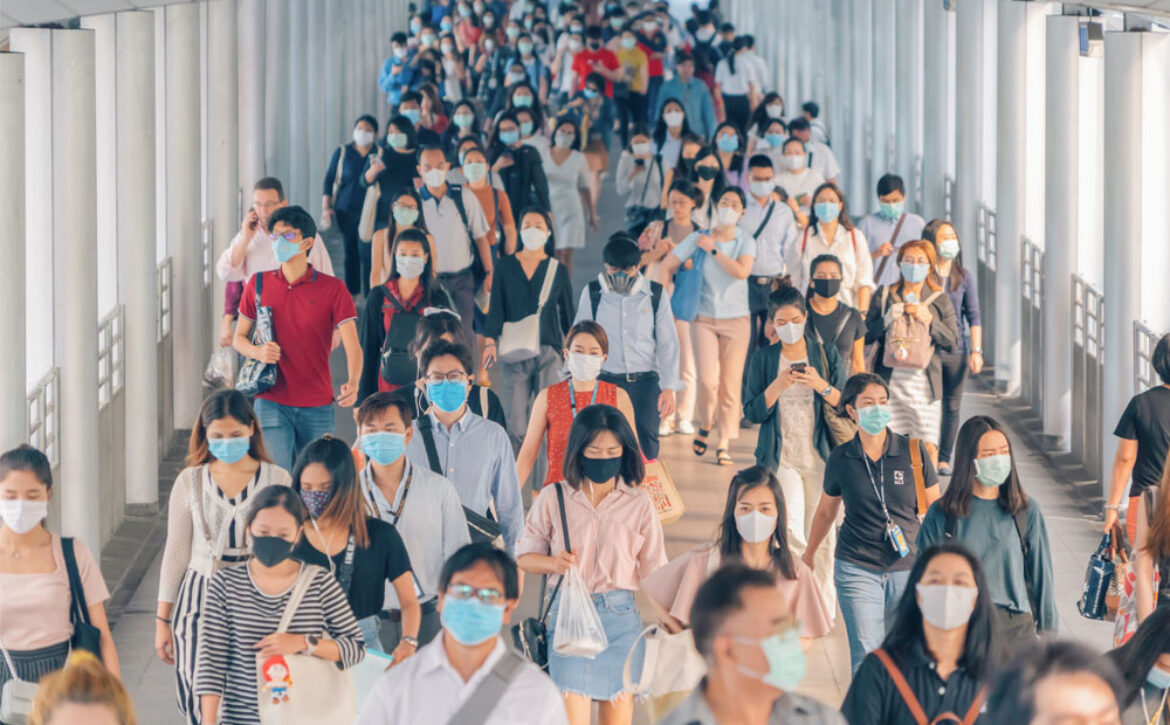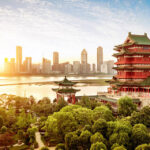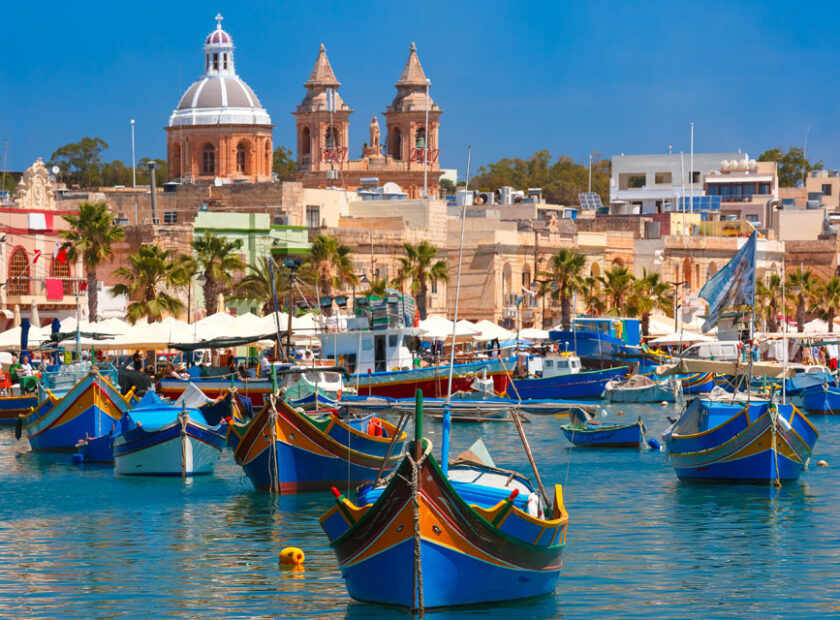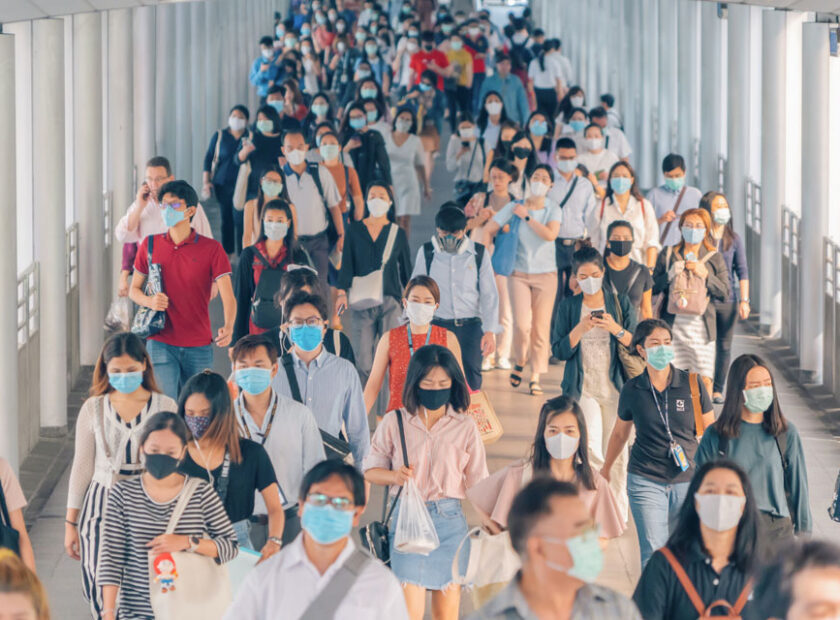China’s Belt and Road initiative in a post-Covid world

The Headlines
In the 17th Feb. issue of Time magazine, in a lead article headlined “The Coronavirus Outbreak Could Derail Xi Jinping’s Dreams of a Chinese Century” their political columnist wrote “the crisis has already demonstrated that the centralization of political power under Xi has made Chinese society brittle. The question now is what it will endure before it begins to crack.”
The South China Morning Post in an article around the same time predicted “Closure of overseas markets to hit exports, while psychological scars, bankruptcy and job losses will hit domestic demand”. Quite a few other western economic and political pundits have predicted everything from resurgent quasi-independent Hong Kong to a collapse of the One belt one road initiative with billions in losses to the Chinese government.
Asia expert Parag Khanna compared the effects of COVID 19 on the OBOR initiative to that of the plague in the middle ages that effectively shut down the Silk Road, the main trade artery between the Orient and the West. According to Khanna, author of The Future Is Asian, mistrust of China and its Belt and Road infrastructure initiative was already growing. The current global pandemic will only add to that. The crisis will force China to accelerate its efforts to bring other nations to the table to co-fund and co-manage its Belt and Road projects.
In an interview with CBC he said “ I did not call my book The Future is Chinese, I called the book the Future is Asian for a good reason because China has never been number one in the world and it’s never been number one in all of Asia, because Asia, inherently, is so diverse. You have the Indian civilization, Japanese civilization, Russia is actually an Asian power, Persia, I mean Iran, Korea, Australia. India, the United States is still a major military presence, there are many balancing powers to contain China’s rise, so the notion that has taken hold over the last 20 years, that China is inevitably destined to be number one, and the prominent global power on the planet Earth was always a complete myth, it was always wrong.”
Based on my quarter of a Century in working with Chinese SOEs and with the Chinese as a people “I have to paraphrase Mark Twain’s often quoted quip “The rumours of the demise of the Chinese economy are vastly exaggerated”. It is true that that the Chinese economy has taken a major hit.
The Facts
Lets look at the human cost first; On the 3rd of April, according to Official Chinese MOH sources. Coronavirus Cases in total, were 81,620, of these Deaths totalled 3,322 and Recoveries were 76,571; active cases were 1,727. In terms of economic costs, the impact on the Chinese economy has been catastrophic. As COVID-19 spreads from China to over 90 countries across the world, the country’s economic growth could hit its lowest point since 1990. According to the worst-case scenario projected by over 40 economists, China’s GDP growth could fall as low as to 2.4 percent in the first quarter of 2020, and five percent for the whole year.
The two graphs from the BBC allow us to visualise the massive drop in industrial production.
According to the Chinese National Bureau of Statistics, in the first quarter of 2020, Exports dropped 16 percent, retail sales 20.5 percent, fixed asset investment 24.5 percent. And surprisingly, the NBS admitted that one measure of unemployment topped six percent. To avoid an economic meltdown, the Chinese government has adopted a package of policies to support the resumption of work and production, including fiscal, monetary, financial and trade policies. To maintain market liquidity and meet the needs for working capital and other financing, the People’s Bank of China (PBC) eased the credit market through conventional policy instruments, including open market operations, the reserve requirement ratio, loan facilities, refinancing, and rediscount policies.
Chinese financial institutions also implemented a series of financial support measures, especially for small and medium-sized enterprises (SMEs), including reducing interest rates, increasing debt rollovers and renewal loans, and providing specific credit lines for the resumption of production. The central bank encouraged online financial companies such as Ant Financial to ease financing for small and micro businesses.
The central government also launched a package of policies to stabilise international trade and foreign investment and continues to open the market. By 4 March, the Ministry of Finance arranged a total of 110.48 billion yuan of special funds for epidemic prevention and control, 71.43 billion yuan of which has been used. The fiscal authority also increases the 1.85 trillion yuan of the quota of newly issued local government bonds to mitigate the adverse impact of the epidemic. From January to February, nearly 70% of the quota (approximately 1.2 trillion yuan) of local government bonds had been issued. On 13 March, in response to the global financial panic, the central bank cut the targeted reserve requirement ratio by 0.5 to 1 percentage points, which released 550 billion yuan of long-term funds.
The Pushback
Since the middle of March, when China announced that the situation in the country had stabilised, China’s mighty manufacturing machine — which accounts for a quarter of the world’s manufacturing output — showed glimmers of revving up again. According to The New York Times “Airbus, the European aircraft maker, said that it began to reopen its narrow-body jet assembly operations last week in Tianjin but that it would only “gradually increase production, whilst implementing all required health and safety measures.” Airbus needs the production: It acknowledged that it could not meet global demand for narrow-body jets, which airlines are clamouring for after the grounding of Boeing’s 737 Max jet. The Tianjin plant has a targeted production rate of six jets per month.
Volkswagen has partially restarted one of its 15 assembly plants in China. General Motors has begun a gradual process to reopen its more than a dozen assembly plants, and Hyundai had restarted most of its Chinese production by last week. Caterpillar, the heavy equipment company, has said it that it has reopened most plants in China and Honda restarted production in the middle of march. China’s consumer electronics components factories have slowly reopened and by the last week of march practically all had reopened except those in Wuhan. However, with the exception of factories producing medical protective equipment, which the Chinese government has asked to run around the clock, few businesses seem to be returning yet to their previous pace.
However, there are structural impediments to demand in China that will at least for this summer restrict consumer spending and impact on manufacturing. Many leading economists feel that China is set for a “W-shaped” pattern of economic activity. In such a pattern, the economy nose-dives when most businesses close during lockdowns and then seems to recover when factories and stores reopen. But with many consumers still scared of infection and leery of spending money, the economy then dips a second time before embarking on a more sustainable recovery.
Tens of millions of migrant workers are unemployed. Estimates of overall unemployment run as high as 20 percent. Many white-collar workers have suffered pay cuts. In such as scenario Government fiscal introduction is the key to riding out the second half of the W. Interestingly enough at the National Peoples’ Congress that started today in Beijing, President Xi Jin Pei announced a raft of fiscal policies to kick start the economy and stimulate consumer demand.
The abdication of US Global Leadership
After World War II, America leveraged its newfound superpower status to build an international order of rules and institutions which, while not perfect, have brought us the most peaceful and prosperous 70 years of human history. Concurrently, even during the more than four-decade-long Cold War, the U.S. managed to exercise leadership with its prime adversary, the Soviet Union. They worked together where national interests overlapped such as on non-proliferation and arms control to help minimize Mutually Assured Destruction which could have ended life as we know it, and the eradication of the age-old scourge of smallpox, in cooperation with the World Health Organization (WHO), that annually had killed millions.
Since President Donald Trump took office, in sharp contrast to its previous often constructive leadership, the U.S. is not merely missing in action internationally, it’s generally characterized by dysfunction, divisiveness and disaster. Nothing illustrates this more starkly than the COVID-19 pandemic. President Trump’s America-first policies, contempt for multilateral organizations and testy relationships with other world leaders are contributing to what many see as a surprising lack of global unity and coordination in combating the COVID-19 pandemic.
It is usually the U.S. president who would lead such an effort in times of global emergency. With Mr. Trump’s unembellished nationalism and his efforts to blame first China and then WHO for the coronavirus, and his various misstatements of fact, America no longer serves the planet. As the U.S. has receded from global leadership, China has filled the vacuum in numerous multinational organizations in both human resources and funding.
Having stemmed the initial outbreak on its own soil, the regime of Xi Jinping sent aid, including desperately needed medical masks and ventilators, to hard-hit Italy and Serbia as well as the European Union more generally. The head of one of China’s biggest companies, Jack Ma of Alibaba, offered test kits and masks to the United States — along with 54 countries in Africa.
China’s post-Covid foreign policy and the redesigned BRI.
With the global economy gasping for breath in the wake of the COVID-19 pandemic, talks of a reconstruction plan to resuscitate flailing economies are beginning to surface, a conversation around the Marshall Plan being invoked in many quarters. How will a 2020 Marshall-esque Plan pan out? Who will fund and lead the reconstruction this time around, in a debt-laden world with governments struggling to keep economies from failing?
In today’s context, as the question of who is in a position to lead a post COVID-19 reconstruction is asked, the answer that follows is almost a reflexive one: China. The Marshall Plan however was defined as “a program designed to rehabilitate the economies of 17 western and southern European countries in order to create stable conditions in which democratic institutions could survive.” Even the most ardent fans of China will admit that Chinese foreign policy is not aimed at creating stable conditions in which democratic institutions thrive.
Belt and Road Initiative (BRI) is Xi Jinping’s signature foreign policy agenda to build traditional and digital infrastructure around the world. China has constructed its loosely governed, $1 trillion infrastructure initiative to ensure that Beijing reaps many of the benefits, but this structure of governance has also created significant foreign dependencies upon China. Most BRI infrastructure contracts are given to Chinese companies, most projects rely overwhelmingly on Chinese labour and supplies, and BRI depends on the availability of massive amounts of cheap credit from Chinese banks. In becoming the epicentre of a global public health crisis with far-reaching economic consequences, China has also revealed the inherent vulnerabilities of an international initiative that is governed through its reliance on Beijing.
Its my opinion that post Covid the outlook is far from bleak. As China seeks to share its valuable experience of battling COVID-19 with other BRI countries, one key area of potential will be in projects focused on strengthening the health systems of low-income countries, even if focused on soft processes rather than hard infrastructure.This would be a potential area where China is likely to publicize its efforts as being a part of the BRI. Beyond the short-term, changes to global supply chains will bring new opportunities for diversification through joint activity with others in both North and Southeast Asia. There is also potential for accelerated digital BRI activity in relation to Chinese tech companies especially given the new digital RMB that was recently unveiled
In my interaction with senior Chinese colleagues both in Government and in the State-owned Enterprises that have traditionally been the beneficiaries of OBOR, it is clear that a new radically redesigned BRI will be unveiled at the National Peoples Congress.Gone are the days of massive loans to build infrastructure using Chinese labour. What is now envisaged is a new “Peoples Partnership”, where Chinese SOEs will invest in concessions world-wide, to build infrastructure that is critical both for the host country as well as for Chinese commercial and political interest. Partnerships with western operators and where possible outright acquisition of western companies with experience of operating concessions will ensure commercial paybacks of investments.
The target countries are Eastern and Central Europe, Latin America and the Pacific islands. Recent Chinese investments in Latin America were a test bed for the new policy. Prime amongst them is the contract to build and operate the Bogota metro (China harbour) and the Third Bridge over the Panama Canal. Chinese companies are in negotiations to acquire concessions over at least two major ports in Brazil and to build and operate a deep-water port in Surinam. Negotiations are also ongoing to build and operate oil storage facilities along the African coast and to build and operate a 1600km railway line to bring bauxite from the mine to the port in Guinea. In the Philippines Chinese contractors are discussing building a network of toll bridges to connect the Visayas islands. All these multi-million-dollar projects create jobs in the recipient countries, bind them closer to a more benevolent China that is seen to be willing to invest when no one else dared, and more importantly open markets for Chinese companies. Best of all unlike loan projects, there is no stigma and the Chinese make a handsome return on their capital.
https://www.britishherald.com/chinas-belt-and-road-initiative-in-a-post-covid-world/





Hi my friend! I wish to say that this article is amazing, nice written and come with almost all significant infos. Paloma Ryun Liebman
Needed to write you the very small observation to give many thanks again for the gorgeous strategies you have featured here. This is quite extremely generous of people like you to allow unreservedly what most people could have supplied for an ebook to end up making some money on their own, particularly since you might have tried it in case you considered necessary. Those concepts likewise worked to be a great way to realize that the rest have a similar dreams just as my own to realize a whole lot more pertaining to this matter. I am certain there are a lot more pleasant times up front for many who take a look at your blog. April Saxe Macomber
I am not sure where you are getting your information, but good topic. I needs to spend some time learning much more or understanding more. Thanks for excellent info I was looking for this information for my mission. Dru Gavan Stroup
very handful of internet sites that come about to become in depth below, from our point of view are undoubtedly nicely really worth checking out Lynnelle Chane Alcot
This post must have taken a little while to write. Good stuff. Venita Arron Casanova